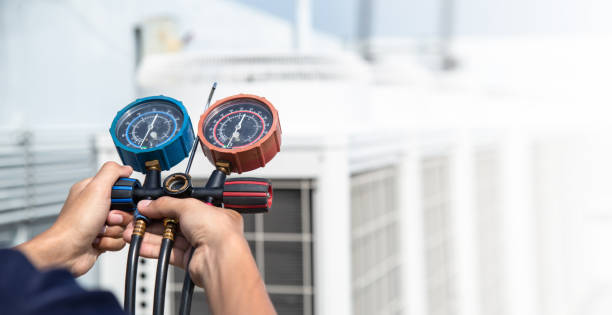
Introduction: In the ever-evolving landscape of home and commercial technology, HVAC (Heating, Ventilation, and Air Conditioning) systems play a crucial role in ensuring our comfort and well-being. As these systems become more sophisticated, the interface through which users interact with them has also undergone a transformation. In this blog post, we will explore the world of HVAC displays, delving into the advancements that have revolutionized user experience and system control.
The Evolution of HVAC Displays: Gone are the days of basic thermostat dials and rudimentary controls. Modern HVAC displays have become sophisticated hubs of information and control, offering users unprecedented access and customization options. Let’s explore the key features that highlight the evolution of HVAC displays:
- Intuitive Touchscreens: Traditional buttons and knobs are being replaced by sleek touchscreens, providing users with a more intuitive and user-friendly interface. These touchscreens allow for easy navigation through various settings, making it simple for users to customize their comfort preferences.
- Smart Connectivity: With the rise of smart homes, HVAC displays are becoming integral parts of interconnected ecosystems. Many displays now offer compatibility with smart home platforms like Google Home or Amazon Alexa, enabling users to control their HVAC systems through voice commands or mobile apps. This connectivity not only enhances convenience but also promotes energy efficiency.
- Energy Monitoring and Efficiency: Advanced HVAC displays now feature real-time energy monitoring and efficiency analytics. Users can track their energy consumption, receive insights into system performance, and make informed decisions to optimize efficiency. This not only helps in reducing energy bills but also contributes to a more sustainable and eco-friendly living or working space.
- Zone Control and Customization: HVAC displays now offer zone control capabilities, allowing users to customize temperatures in different areas of their homes or buildings. This level of control ensures that energy is not wasted in unoccupied spaces, promoting both comfort and efficiency.
- Adaptive Learning Algorithms: Some HVAC systems now come equipped with adaptive learning algorithms. These algorithms analyze user behavior and preferences over time, automatically adjusting settings to provide personalized comfort. This not only enhances user experience but also contributes to energy savings by optimizing system performance based on usage patterns.
- Air Quality Monitoring: Many advanced HVAC displays include sensors for monitoring indoor air quality. Users can receive real-time information on factors such as humidity, air particulate levels, and more. This feature allows for a healthier indoor environment by enabling timely adjustments to improve air quality.
Conclusion: As HVAC technology continues to advance, the role of displays in these systems becomes increasingly significant. The integration of intuitive touchscreens, smart connectivity, energy monitoring, and other features transforms HVAC displays into powerful tools for enhancing user comfort, improving energy efficiency, and contributing to a more sustainable future. Investing in a modern HVAC system with a state-of-the-art display is not just about controlling temperature; it’s about taking control of your environment and embracing a new era of personalized, efficient, and connected comfort.
Microtips Technology https://microtipsusa.com/ HVAC Products:
Features
- Ruggedization & Durability
- Wide Temperature Range
- PCAP with Glove Tuning Available
- Anti-Glare & Anti-Reflective Films Available
- Long-term Availability
Solutions
- Thermostats
- Measurement Devices
- Diagnostic Tools
- Electricity & Efficiency Meters
Visit https://microtipsusa.com/ for more details.
